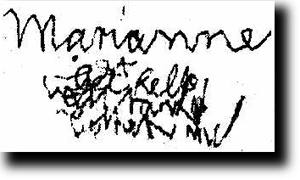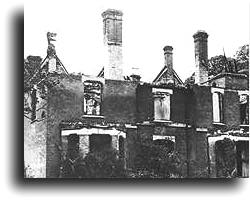Reposted from Archives
Borley Rectory carries the dubious distinction of Britain’s most haunted house. In perspective, there is nothing exceptional about the case. There are the typical sightings of apparitions (as opposed to ghosts), cold spots, poltergeist-like activity and a legend shrouded in mystery. Even the building’s physical appearance lends itself nicely to the legend. What is exceptional is the inordinate amount of press coverage and attention it has received, mainly due to the personal involvement and intervention of the famous English “ghosthunter”, Harry Price (founder of the National Laboratory of Psychical Research of London).
The site of Borley, (around 60 miles north east of London in the Essex countryside), was first noted in the 1066 Doomsday Book where a Borley Manor was situated – it follows that a wooden church would probably have been built on the site. It’s history is shrouded in myth and mystery, but the first indication that something was amiss on the site of Borley was in 1362 when a Benedictine monk attempted to elope by horse drawn coach, with a nun from the nearby nunnery. Their plans were thwarted – the monk was hanged and the nun was bricked up alive in the walls of the nunnery.
The red brick building that was Borley Rectory was built by Reverend Henry Dawson Ellis Bull (rector of Borley) in 1863, who later settled there with his wife, Caroline Foyster (where she mothered 14 children).
In time, witnesses reported seeing stones being thrown from some invisible source, ghostly footsteps were heard and the specter of a nun, the most reported event at Borley, began to be seen, often in broad daylight and on a stretch of ground to be named the “nuns walk”. On July 28, 1900, three daughters of Henry Bull saw the nun and, assuming she was flesh and blood, went to greet her as a guest on the grounds – she mysteriously disappeared. The nun was also seen standing by a gatepost on four separate occasions by a passing carpenter.
It was in 1928 when the full haunting of Borley Rectory got underway. ( This is also the time when Harry Price became involved – Price was later to be accused of fraud). The Bull family had died one by one, or moved away, and after a short period standing empty the Reverend Guy Smith and wife took up residence.
Immediately, there were reports of whispers in the night, the sound of footsteps, objects being thrown at guests, illumination from dark rooms, two maids saw the apparition of the nun and even a phantom coach was seen. The words ‘Don’t Carlos, don’t’ were, reportedly, wailed late at night on more than one occasion – Carlos was the nickname for Henry Bull.

In 1929, and at their wits end, the Smiths contacted the Daily Mirror, a British journal, requesting help. Harry Price then invited himself to the Rectory to carry out a full investigation. On their first visit the group, comprised of Price, his secretary and a reporter, all witnessed what they described as “poltergeist activity”, spontaneous displacement of inanimate objects, strange odors, cold spots and the sound of galloping horses to name but a few. Most notably, the Daily Mirror reporter, Mr. C.V.Wall, saw the nun. Within a year, the Smith family left the Borley Rectory forever, dismissing their move as forced ‘due to a lack of amenities’.
In October of the same year, the Reverend Lionel Algernon Foyster, wife Marianne and daughter Adelaide moved in. Within a year, the activity increased to such an extent that, after a visit from Harry Price he voiced his fears for the family’s safety. Reportedly, the phenomena had become more violent and Marianne appeared to be the “focus” of the attacks. She was assaulted at least twice, once being struck in the face, another time being flung from her bed after an “exorcism”. Perhaps the most interesting paranormal evidence came in the form of notes and wall writings addressed to Marianne. During the investigative period, Price claimed that at least 2000 separate paranormal events had taken place.

Not surprisingly, in 1935 the Foysters left Borley Rectory and two years later Harry Price leased the house for a year. He conducted endless experiments and vigils but the activity appeared to have subsided considerably. At this time Price was accused of fraud on several occasions (Price was allegedly caught with a pocketful of pebbles after a short pebble throwing, assumedly paranormal, episode concluded.
After a séance on March 27, a message was received that ‘Sunex Amures and one of his men ‘ would burn down the rectory that very night. Nothing happened that evening but on February 27,1939 a fire broke out at midnight and razed the building to the ground.
To this day the site that Borley Rectory occupied holds a certain mystique for parapsychologists and psychic researchers. It is unlikely that all the reported events at Borley were fraudulent, but there is evidence and testimony to bring ALL of Harry Price’s conclusions into question. All the families leaving the rectory claimed that their decision was in no way related to any strange activity regardless how it was reported in the press. Of course it is entirely possible the families were seeking to avoid potential ridicule and harassment they may have received for supporting such incredible claims. Unfortunately, as Borley Rectory no longer stands no one will ever know the truth, only the legend remains – a fitting epilogue for Britain’s most haunted house.
